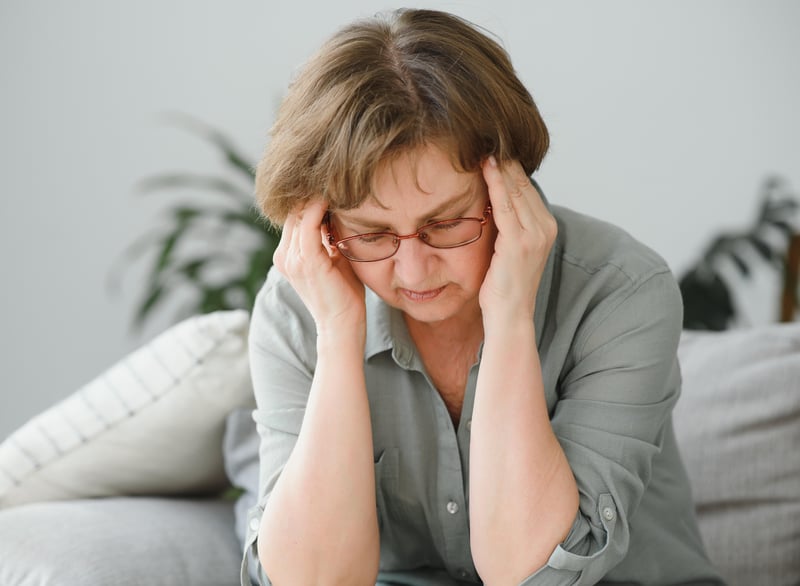Manténgase sano!

- Alan Mozes
- Posted December 15, 2022
Caring for Kids and Aging Parents: The 'Sandwich' Generation Is Under Strain
Nearly one-quarter of all American adults who care for an elderly parent also care for a child at the same time, a new study reveals.
And when compared with those who only have a parent under their watch, members of the so-called "sandwich generation"-- namely caregivers of both the old and the young -- are much more likely to struggle with money problems, emotional trouble and exhaustion, the researchers found.
"There is actually little research evidence characterizing this group,"said lead study author Lianlian Lei, a health services researcher in the department of psychiatry at the University of Michigan, in Ann Arbor. "So, our team aimed to fill that gap and provide a national estimate describing this group of caregivers, and how they are similar or different from other types of caregivers."
In the end, Lei's team pegged the number of dual caregivers in the United States at about 2.5 million, "which is nearly one-quarter of all those who are caregivers for their aging parents."
"We weren't that surprised by the size,"she stressed. "It seems more like we described something that many colleagues actually are living through."
Nor were investigators surprised by the struggles they identified as particular to this group, "given the intense type of burden they are experiencing."
To get a handle on the scope and burdens of dual caregiving, the researchers sifted through the findings of the 2015 National Study of Caregiving and the National Health and Aging Trends Study.
The studies collectively involved about 1,100 men and women who were looking after about 1,100 children under the age of 18 and/or roughly 1,650 adults over the age of 65. About 60% of the study participants were women.
In all, just over 24% of study participants were found to be taking care of both a minor and a senior. The remainder were only caring for an older adult, although the amount of time spent looking after a senior was about the same for each group: 77 hours per month among those in the dual care position versus 72 hours per month among the senior-only caregivers.
Dual caregivers were also more likely to receive some pay for their work (69% versus 54%). But those performing double service were also more likely to be Medicaid recipients, as was the adult under their care, suggesting lower income levels.
In fact, 24% of dual care adults said they had financial difficulties, compared with just 12% among senior-only caregivers. Similarly, they were more burdened by emotional issues (44% versus 32%). And while 1 in 5 senior-only caregivers said they were exhausted, that figure was more than 1 in 4 among dual caregivers.
The extra burdens that seem to befall the sandwich generation has largely gone unnoticed, the research team noted. And Lei pointed out that, to a certain degree, that has to do with the fact that, "historically, the work of caregiving, both of older adults as well as of children, disproportionately falls on women,"as evidenced in the gender breakdown of the study itself.
At the same time, she said, much of public policy around caregiving has tended to be the purview of men. Which is why "it is not surprising that the particular needs of caregivers have been discounted,"Lei added.
So, what can be done to help those who feel they might be sinking under the weight of their obligations?
"Given the relatively high proportion of employed sandwich generation caregivers, they may benefit from specific employment-related supports, such as paid time off for caregiving responsibilities,"Lei suggested.
Dual caregivers "may also benefit from the paid caregiving policies for family caregivers from Medicaid,"which she argued should be expanded to include more states and be improved in both scope and coverage.
"Finally, people can also check with local organizations such as their Area Agency on Aging or Alzheimer's Association to learn about resources that might be available,"Lei suggested.
The study team published their findings recently in the Journal of the American Geriatrics Society.
"Caregiving for a loved one is physically and emotionally difficult for even the most prepared and financially secure individuals,"said Anny Fenton, an instructor of medicine in the department of population science at Dana-Farber/Harvard Cancer Center, in Boston. "And those caring for a parent are often most at risk."
Fenton noted that oftentimes it's the first time handling major medical events, and sometimes requires caring for a parent from another city or state. "And the role reversal of caring for one's parent can be challenging for both the caregiver and patient,"she said.
On top of that, "younger caregivers often do not have as much of a nest egg, income or seniority at work to support time off as older adult-child caregivers,"she added. "While we wait for policy to catch up, there are online resources for caregivers like support groups and meal trains."
More information
There's more on caregiving at AARP.
SOURCES: Lianlian Lei, PhD, health services researcher, department of psychiatry, University of Michigan, Ann Arbor, Mich.; Anny Fenton, PhD, instructor of medicine, department of population science, Dana-Farber/Harvard Cancer Center, Boston; Journal of the American Geriatrics Society, Nov. 25, 2022
